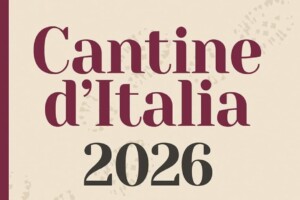In a wine market where a considerable part of the added value of a bottle depends on its geographical origin, traceability is definitely a fundamental issue. Besides the “Qr code”, “block chain”, government labels and so on, one of the methods that people in the wine world have been talking about for some time, which has come to the forefront in a recent debate, is the analysis of isotopes. To put it simply, isotopes are atoms of substances found in wines of “one specific” territory compared to another. Opinions have been divided on the effectiveness of the system, which requires a substantial and constantly updated database to work. And actually, up until now, this has not been the case. Consequently, the goal of the public consultation launched by the European Commission is to give a new impetus to this process and their intentions, as we read in the document, is the determination to implement this anti-fraud tool. The first fact we must consider is that scams and counterfeiting “pilfer” close to 1.3 billion euros a year from the regular wine market in Europe, which is 3.3% of the total, causing substantial damage on the economic level, as well as damage to image and credibility. “Therefore, it is necessary to improve and reinforce the fight against fraud in the European Union wine sector, especially regarding the function of the analytical database of isotope data referred to in Article 39 of the Delegated Regulation (EU) number 2018/2732 of the Commission, the coordination of related responsibilities in the Member States, and with the European Reference Center for Control in the Wine Sector (ERC-CWS). This would contribute to the Commission’s strategy, “A Farm to Fork strategy for a fair, healthy and environmentally-friendly food system”, reads the document, on which anyone who wants to can submit their feedback until April 13, 2021. “Considering the average of wine production in the last 5 years in the Union, the share of wines that have obtained a PDO or a PGI denomination”, the document reads, “follows a constant trend increase, reaching over 60% of the total production. In the 2019/2020 campaign, the share was almost 70%. Since wines that have obtained a PDO or PGI recognition are at greater risk of fraud, it is then necessary to include a greater share of these wines in the database, which is now at 40% of the total of the EU’s PDO or PGI wines”. In short, the purpose of the proposal is to involve several organizations and controller bodies, to provide more samples to be analyzed as well as to create a comparative database for the wines to be checked, in order to verify their authentic origin.
“Missing isotope data and incomplete data sets can lead to delays or even jeopardize the outcome of investigations into cases of suspected wine fraud, which could lead to putting counterfeit wines on the market. This lack of data”, the document continues, “threatens not only the reputation of European Union wines, but could also impact the amount of excise duties applied. This would create the risk that excise duties are applied to incorrectly labeled categories of wines. In this case, it is necessary to improve the current legal framework for the analytical database of isotopic data in order to ensure that it is updated within a definite period of time, and therefore to provide better protection against fraud in the wine sector of the European Union. There are indeed attribution problems in some Member States, so it is also necessary to clarify which interested parties have the right to access the samples and files”.
Copyright © 2000/2025
Contatti: info@winenews.it
Seguici anche su Twitter: @WineNewsIt
Seguici anche su Facebook: @winenewsit
Questo articolo è tratto dall'archivio di WineNews - Tutti i diritti riservati - Copyright © 2000/2025









































































































































































































